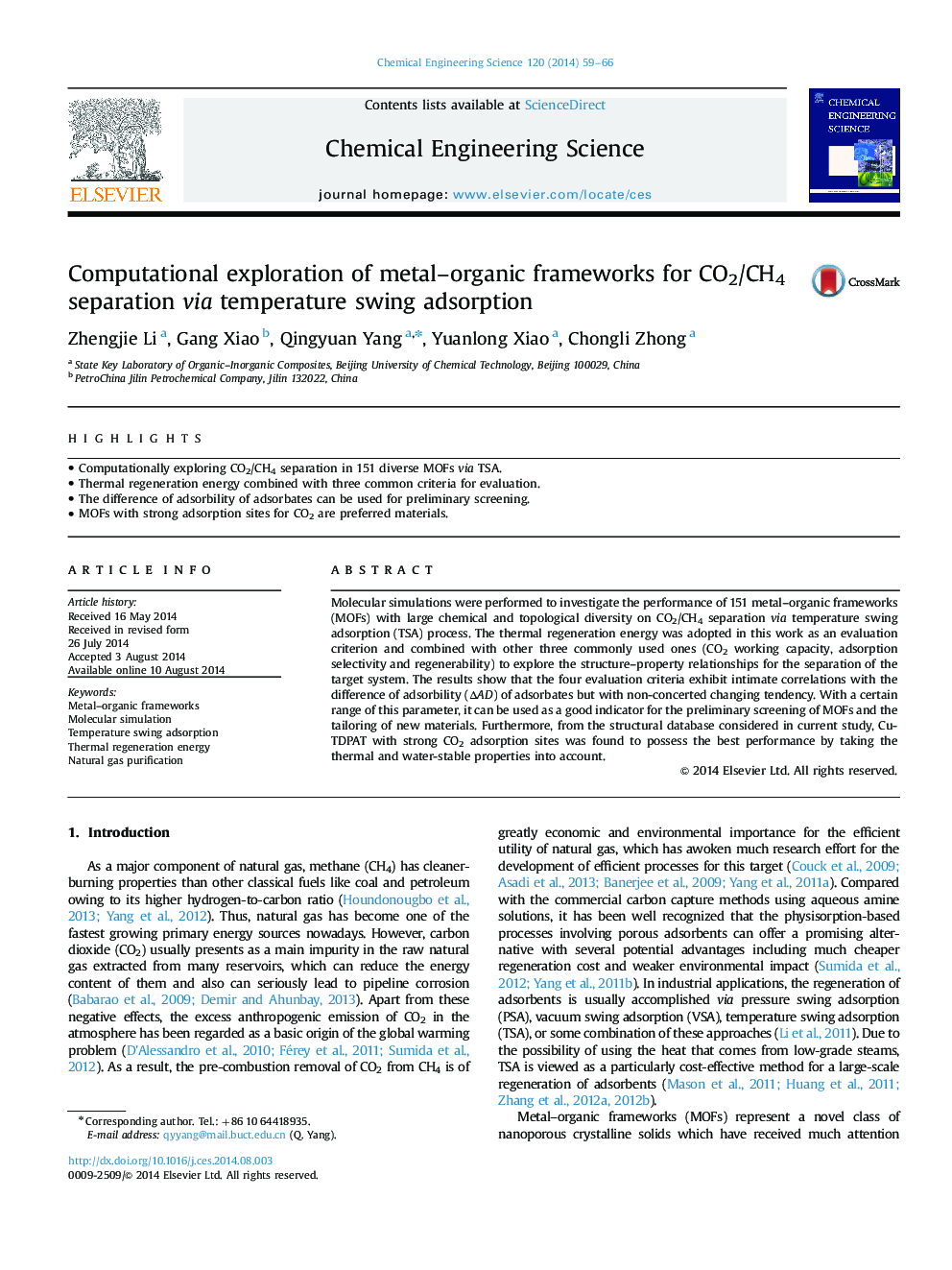| Article ID | Journal | Published Year | Pages | File Type |
|---|---|---|---|---|
| 6590944 | Chemical Engineering Science | 2014 | 8 Pages |
Abstract
Molecular simulations were performed to investigate the performance of 151 metal-organic frameworks (MOFs) with large chemical and topological diversity on CO2/CH4 separation via temperature swing adsorption (TSA) process. The thermal regeneration energy was adopted in this work as an evaluation criterion and combined with other three commonly used ones (CO2 working capacity, adsorption selectivity and regenerability) to explore the structure-property relationships for the separation of the target system. The results show that the four evaluation criteria exhibit intimate correlations with the difference of adsorbility (ÎAD) of adsorbates but with non-concerted changing tendency. With a certain range of this parameter, it can be used as a good indicator for the preliminary screening of MOFs and the tailoring of new materials. Furthermore, from the structural database considered in current study, Cu-TDPAT with strong CO2 adsorption sites was found to possess the best performance by taking the thermal and water-stable properties into account.
Keywords
Related Topics
Physical Sciences and Engineering
Chemical Engineering
Chemical Engineering (General)
Authors
Zhengjie Li, Gang Xiao, Qingyuan Yang, Yuanlong Xiao, Chongli Zhong,
